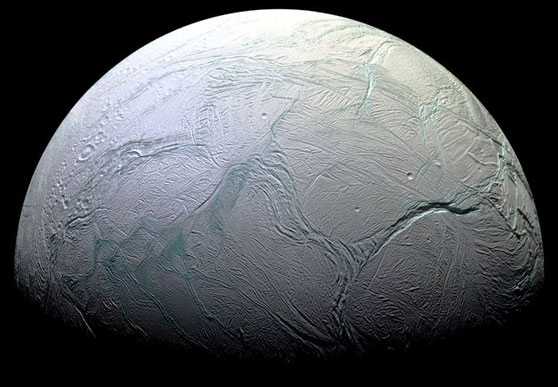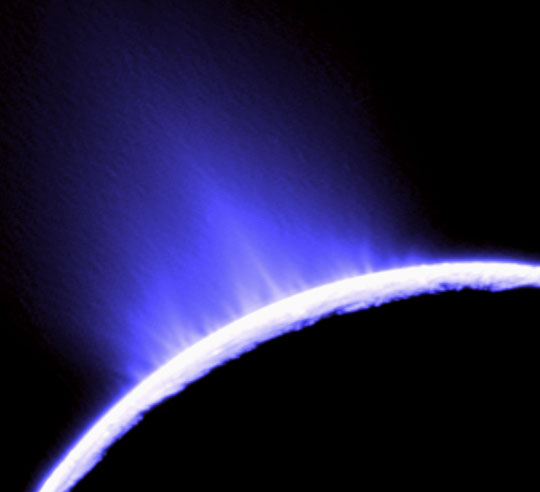Hydrothermal activity would mean there is a heat source in Enceladus's core that is interacting with rocks that are heating the Saturn moon's ocean. That means there could be life on the ocean floor as Earth has life at hot vents on ocean bottoms.
— “We think that the temperature at least in some part of the ocean
must be higher than 190 degrees Fahrenheit. If you could swim a little bit
further from the really hot part, then it could be comfy.”
- Sean Hsu, Ph.D., Laboratory for Atmospheric and Space Physics, Univ. of Colorado
— “[For such heat] the most exciting possibility is that there's ongoing chemical reactions between the rock inside Enceladus and the water.”
- Bill McKinnon, Ph.D., Planetary Scientist, Washington Univ.-St. Louis


March 12, 2015 Boulder, Colorado - NASA's Cassini spacecraft has found evidence of ongoing hydrothermal activity on Enceladus, one of Saturn's 31 moons and the sixth largest. In the March 11, 2015 issue of Nature, postdoctoral researcher, Sean Hsu, Ph.D., and colleagues at the Laboratory of Atmospheric and Space Physics at the University of Colorado in Boulder, have found that microscopic grains of silica detected near Saturn are most likely spewed out from the watery geysers on Enceladus. Dr. Hsu says in a March 11, 2015, LASP press release: “It's very exciting that we can use these tiny grains of rock, spewed into space by geysers, to tell us about conditions on — and beneath — the ocean floor of an icy moon.”
Click here to subscribe and get instant access to read this report.
Click here to check your existing subscription status.
Existing members, login below:
© 1998 - 2025 by Linda Moulton Howe.
All Rights Reserved.

